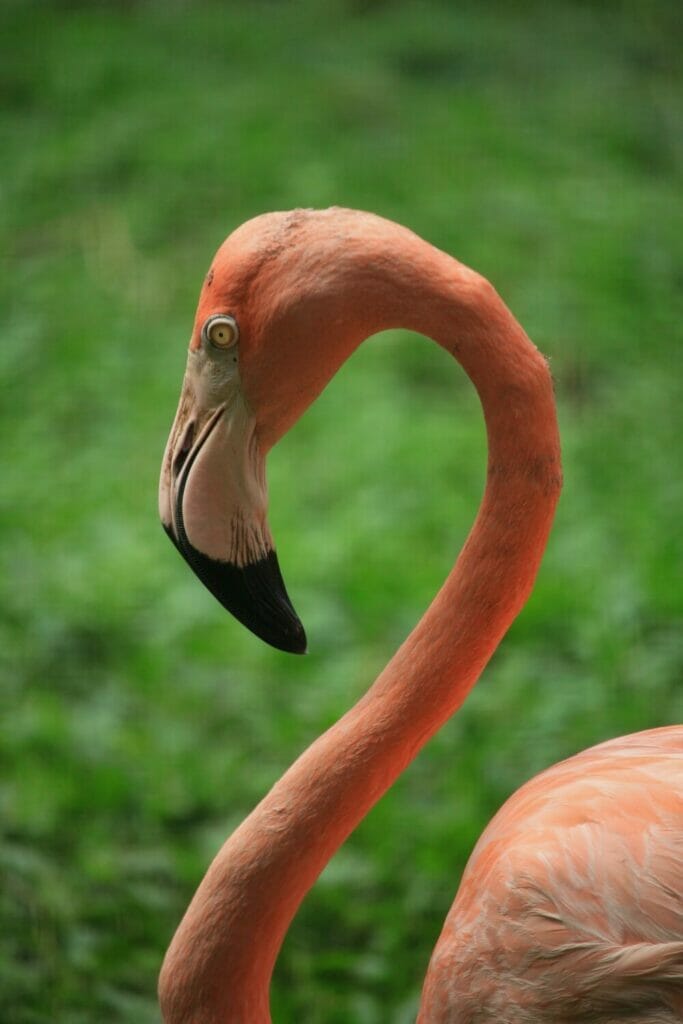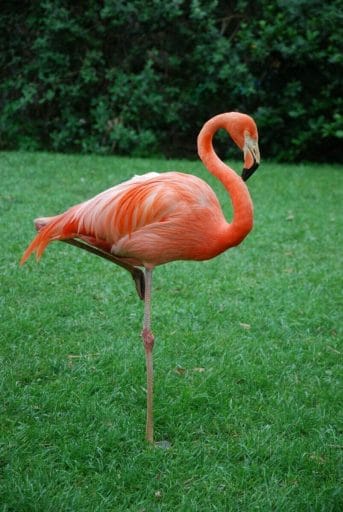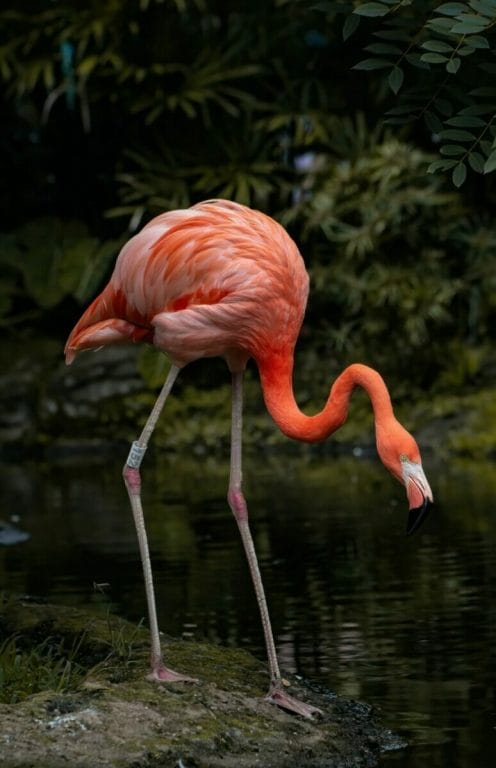Flamingos are a species of wading birds native to delicate climates such as wetlands and ponds filled with brackish water. These animals can be found living in areas in South America, Africa, and Southeast Asia.
With their unique pink hues, legs that are longer than their body size, and long necks, flamingos have become distinct animals. Amidst all of their fascinating features, many often wonder about the flight capabilities of flamingos. While some believe these iconic birds can take flight like other birds, the answer is not so clear-cut.
In this article, I will explore if flamingos truly fly and go over related facts about their behavior in the wild.

American Flamingo (Phoenicopterus ruber)
While there is the possibility of seeing several types of flamingo in the United States, there is actually only one native species.

The American Flamingo is widespread throughout the Gulf of Mexico, from the Caribbean across the coasts of South America to the Galapagos Islands. In North America, it is uncommon and only seen in Florida and across the coasts of Alabama, Louisiana and Texas. It is separated from other species like the Greater Flamingo as it has a deeper coloring.

Do flamingo actually fly?
Flamingo are iconic birds, with long legs and bright pink feathers. Despite their beauty, many people mistakenly believe that flamingos cannot fly. This is not true; flamingos can indeed fly. They have strong wings and powerful muscles that allow them to take off and soar through the air.
Do all flamingo species fly?
All flamingo species are capable of flight, but the amount and distance they fly can vary depending on their environment. In areas with plenty of food sources, such as wetlands or lagoons, flamingos may not need to fly very often. However, in more arid regions where food is scarce, they may be required to fly greater distances in order to find sustenance.
Flamingo have adapted to their environments over time and have developed different strategies for finding food. Some species will migrate seasonally in search of better feeding grounds, while others remain stationary all year round.
Flamingos that live in colder climates may even hibernate during the winter months when food is scarce. No matter what kind of environment they live in, all flamingo species are capable of flight and use it as a means of survival.
What heights can they fly at?
Flamingo are known for their graceful and majestic flight, but at what heights can they fly? Studies have shown that flamingo can reach large altitudes of roughly 15,000 feet when flying across the Andes in South America.
The height at which they can fly is usually dependent on which direction and even the wind strength. Typically, they can travel roughly 375 miles or 600 km.
When flying over oceans, flamingos fly gradually lower than when they are over the ground. This is likely due to the fact that there is less air resistance over water, allowing them to conserve energy by not having to fly against strong winds.
The ability of flamingos to reach such great heights is a testament to their remarkable physical capabilities. They have evolved over time to become incredibly efficient flyers, able to soar through the sky with ease and grace.

Do flamingo migrate?

While they are often associated with tropical climates, some flamingo species migrate to different areas depending on the season. With their impressive wingspan and strong flight muscles, flamingos can cover large distances quickly when necessary.
They typically feed on small aquatic organisms such as shrimp and algae, which they filter from shallow water using their beaks. Flamingos also need access to wetlands for nesting and raising young, so they may roam widely in search of suitable habitats.
Do they fly in groups?
Flamingo are beautiful and iconic birds that are often seen in larger flocks, known as flamboyance, which has to be the best collective noun ever! These groups of flamingo can be quite impressive to witness, with their bright pink feathers and long legs.
But do they fly in groups? The answer is yes! Flamingo usually fly in a V formation or rows, which helps them save energy. This allows the group to travel further distances with less effort than if they were flying alone.
The sight of a flock of flamingos flying together is truly something special. It’s amazing how these birds can work together so efficiently and gracefully while in flight. Not only does it help them conserve energy, but it also provides protection from predators since there are more eyes looking out for danger.
Flamingo flocks can also be incredibly loud when they take off into the sky, making for an unforgettable experience for anyone lucky enough to witness it!

How do flamingo take off from the ground?
Flamingo are large birds, with some species reaching up to five feet tall. Despite their size, they are surprisingly agile and can take off with ease. To do so, flamingo typically run while making a beating motion with their wings. This helps them gain enough momentum to lift off the ground.
Flamingo also have powerful leg muscles that help them push off the ground quickly and efficiently when taking flight. Once in the air, they use their long wingspan to soar gracefully through the sky.

Do they fly very often?
Flamingo are known for their bright pink feathers and long legs, but they are also frequent fliers. They often migrate from one area to another depending on the season and availability of food sources.
Flamingo have even been seen flying across oceans! Their ability to fly is an important part of their survival and helps them find food and shelter when needed. Flying also allows them to escape predators more easily than if they were stuck on the ground. All these factors make it clear that flamingo do indeed fly often!

Final Thoughts
Flamingo are beautiful and iconic birds that are often seen in large flocks. They have the ability to fly in “V” formations, which helps them conserve energy and protect themselves from predators.
I hope that this article has given you a thorough insight into the world of flamingos and just how they are able to fly so well as a species.
FAQ
Because not all flamingo migrate and migration patterns are uncertain, the best idea is to go somewhere that there are populations and see them in flight. The Gulf of Mexico and Caribbean countries are probably the easiest places to see them.
Particularly in Florida, you may mistake the Roseate Spoonbill with the flamingo. The trick is to look at the bills. The Spoonbill has a wide and flat bill, whereas the American Flamingo’s bill is large but short with a definite hook.
Despite being called the American Flamingo, it is not actually often seen in the States. It breeds further south in Central America, the Caribbean and the Galapagos.










